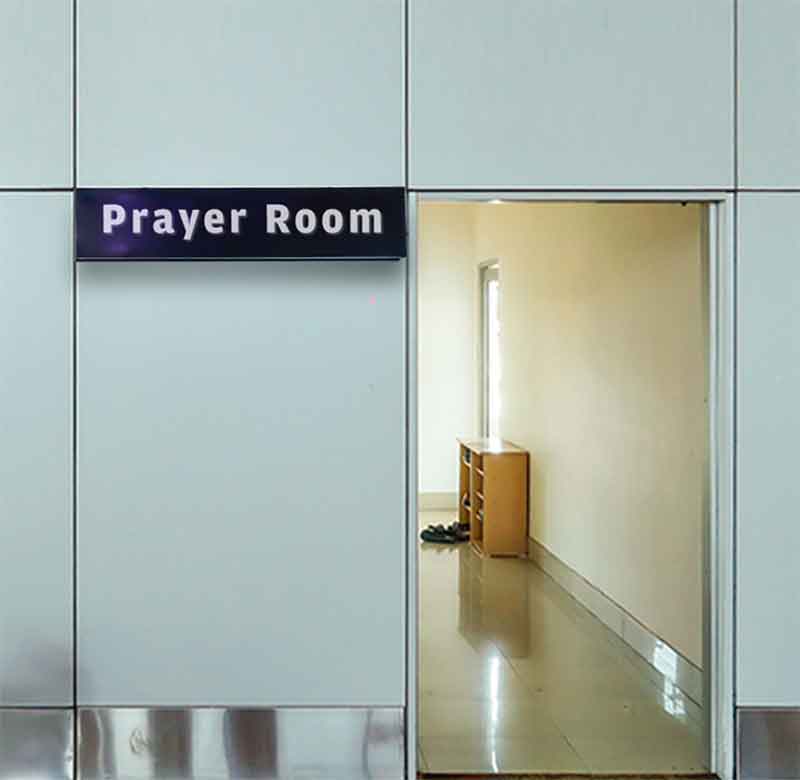
What does quantum computing mean for bitcoin?
In recent days there has been a mini media firestorm surrounding Google’s announcement about Willow, its new quantum computer, and a perceived threat to bitcoin. Most of the analysis reveals a remarkably surface-level understanding of how quantum computing will change cryptography, as well as how bitcoin remains resilient to these kinds of technological advancements. We’re going to take a deeper look at quantum computing and the threat it poses to bitcoin. It will get technical at certain points, but this is necessary to scratch the surface and truly understand the state of play.
In short, quantum computing will certainly necessitate a change to bitcoin’s protocol within the next few years, similar to the computer upgrades triggered by Y2K. It will be an expensive and time consuming exercise, but not an existential threat to bitcoin itself. And it won’t only be bitcoin that’s affected, since what we are really talking about is the ability of quantum computers to crack every kind of cryptography we use today across finance, commerce, banking, and more.
It’s hard not to wonder whether some of this alarmism about the end of bitcoin stems from a kind of “sour grapes” dynamic. Critics who have long eschewed bitcoin – whether because they don’t believe it could ever work, resent its challenge to government control, or simply regret not investing when it was cheaper – are seizing on Google’s quantum computing news to predict bitcoin’s downfall. These reactions often say more about the biases of the skeptics than the vulnerabilities of the bitcoin itself.
Google’s Willow quantum computer can make calculations with 105 qubits, and its output is believed (as of now) to be relatively accurate. Although 105 qubits is a large step up in processing power from previous quantum computers, breaking bitcoin’s encryption would require 200 to 400 million qubits. To reach this capability within 10 years, quantum computation would have to rise over 324% annually, which is far outside expectations.
Nonetheless, quantum computing is a threat to bitcoin that must be taken seriously. Bitcoin’s protocol will need be updated to be quantum resistant, and sooner than later. Conversations in the bitcoin developer community about when and how to do this have already begun. Once these ideas are more solidified, a Bitcoin Improvement Proposal, or BIP, will be posted online for continued debate and experimentation. If and when any particular solution is chosen by the community, it will take effect once a majority of bitcoin nodes adopt it.
The changes coming to bitcoin to meet this challenge pale in comparison to what will be required of millions of other secure computing protocols and networks. The effort to upgrade the entire world’s cryptographic protocols will be an order of magnitude more complex than preparing for Y2K.
Focusing on how quantum computing will affect cryptocurrency misses the much more important point: The end of encryption is not just a bitcoin problem, it’s an everything problem. The transition to a post-quantum world will be a fundamental challenge to modern civilization’s backbone.
Encryption is the bedrock of modern life, underpinning virtually every aspect of tech-enabled society. Financial systems rely on RSA encryption to secure online banking transactions, ensuring that sensitive details like credit card numbers and account credentials are safe from theft. Without encryption, there is no banking system.
E-commerce platforms use the same principles to protect payment data as it moves between buyers and sellers. Without encryption, there is no e-commerce.
Hospitals and medical providers rely on encryption to move electronic health records around and process payments. Without encryption, there is no modern medical system.
Government agencies use encryption to secure classified communications, shielding national secrets from potential adversaries. Without encryption, there is no national security.
Encrypted commands secure Internet of Things (IoT) devices, from connected cars to smart home systems, preventing malicious actors from taking control of everyday technology. Without encryption, there are no smart devices.
Although we could still be years or even decades away from the end of conventional encryption methods, preparation for quantum supremacy has already begun in light of the “harvest now, decrypt later” threat.
One of the key features of encryption is that it allows you to send secure messages over an insecure channel. For instance, when you log into your bank account on your home computer, your password is encrypted before being sent over the internet to your bank. Along the way, it may pass through numerous servers, which could theoretically save and store it. However, since the password is encrypted, they would be saving a string of gibberish. If you were a bad actor, you could not decipher the password, so saving it would be pointless.
That is, unless you save it for years or decades, waiting for the day that you can decrypt the data using a quantum computer that is yet to be invented.
That might not make sense for a bank password. Like a lot of other encrypted data, it would probably be irrelevant beyond a certain time horizon, even if it were decrypted decades later. Passwords get changed, accounts are closed, people pass away, and companies cease to exist. However, in some domains, encrypted data may be useful years or even decades after it is saved – data like state secrets or master lists of passwords that are reused across platforms.
If quantum computing is expected to crack encryption in a few years or decades, attackers in sensitive domains like defense and intelligence would (and surely do) collect encrypted data now, even if it is currently indecipherable and useless. Therefore the groundwork for the transition to post-quantum cryptography has already begun to be laid down.
While quantum computers will eventually crack today’s methods of encryption, they could also be used to develop even more advanced cryptographic algorithms. Said a different way, quantum computing doesn’t signal the end of cryptography itself, but rather a shift from today’s cryptographic algorithms to newer, quantum-resistant ones.
This transition is already underway. Post-quantum cryptography (PQC) is an active field of research, producing promising advancements that aim to secure systems against future quantum threats while preserving the fundamental principles of cryptographic security. Bitcoin, and everything else, will need to make use of advancements in PQC to maintain its integrity.
The foundation of PQC lies in mathematical problems that quantum computers are not well-suited to solve. Unlike today’s cryptography, which relies on the discrete logarithm problem and integer factorization – both of which could be efficiently tackled by a sufficiently powerful quantum computer – PQC algorithms are built on different mathematical frameworks. These include lattice-based cryptography, multivariate polynomial equations, and hash-based signatures, all of which show significant promise in resisting quantum attacks.
The National Institute of Standards and Technology (NIST) has been at the forefront of this effort, coordinating a global initiative to standardize quantum-resistant cryptographic algorithms. After years of rigorous evaluation, NIST announced a set of candidate algorithms for post-quantum cryptographic standards in 2022, focusing on practical implementation and broad applicability across industries.
While the transition to PQC will be complex, it is already taking shape. National Security Memorandum 10 (NSM-10) set a target date of 2035 for migrating federal systems to quantum-resistant cryptographic methods. However, certain systems with long-term confidentiality needs, such as government communications or secure financial transactions, may require earlier adoption due to their heightened risk profiles. The NIST recommends prioritizing quantum-resistant key-establishment schemes in protocols like TLS and IKE, which underpin secure communications on the internet.
The path forward for PQC involves not only updating cryptographic standards but also ensuring compatibility with existing systems. This is a daunting task, given the diverse applications of encryption across industries, but it is essential to maintaining trust in a connected, digital world. As NIST continues to work with academia, industry, and governments, the widespread adoption of PQC represents a vital step in future-proofing the internet.
Our digital lives will need to be upgraded to be quantum-resistant, one protocol at a time. There are so many protocols relying on encryption that there will inevitably be some mistakes and hacks as they are upgraded to be quantum resistant. Bitcoin being a single protocol so critical to global finance, there is little doubt that it will be one of the first out of the gate.
The transition to post-quantum cryptography may be challenging, but the fact that it’s necessary is exhilarating – it signals that we are entering the era of quantum computing. This transformative technology promises breakthroughs in fields ranging from medicine to advanced materials, unlocking possibilities and innovations that we can scarcely imagine today.
One Community. Many Voices. Create a free account to share your thoughts.
Our community is about connecting people through open and thoughtful conversations. We want our readers to share their views and exchange ideas and facts in a safe space.
In order to do so, please follow the posting rules in our site’s Terms of Service. We’ve summarized some of those key rules below. Simply put, keep it civil.
Your post will be rejected if we notice that it seems to contain:
User accounts will be blocked if we notice or believe that users are engaged in:
So, how can you be a power user?
Thanks for reading our community guidelines. Please read the full list of posting rules found in our site’s Terms of Service.
source











